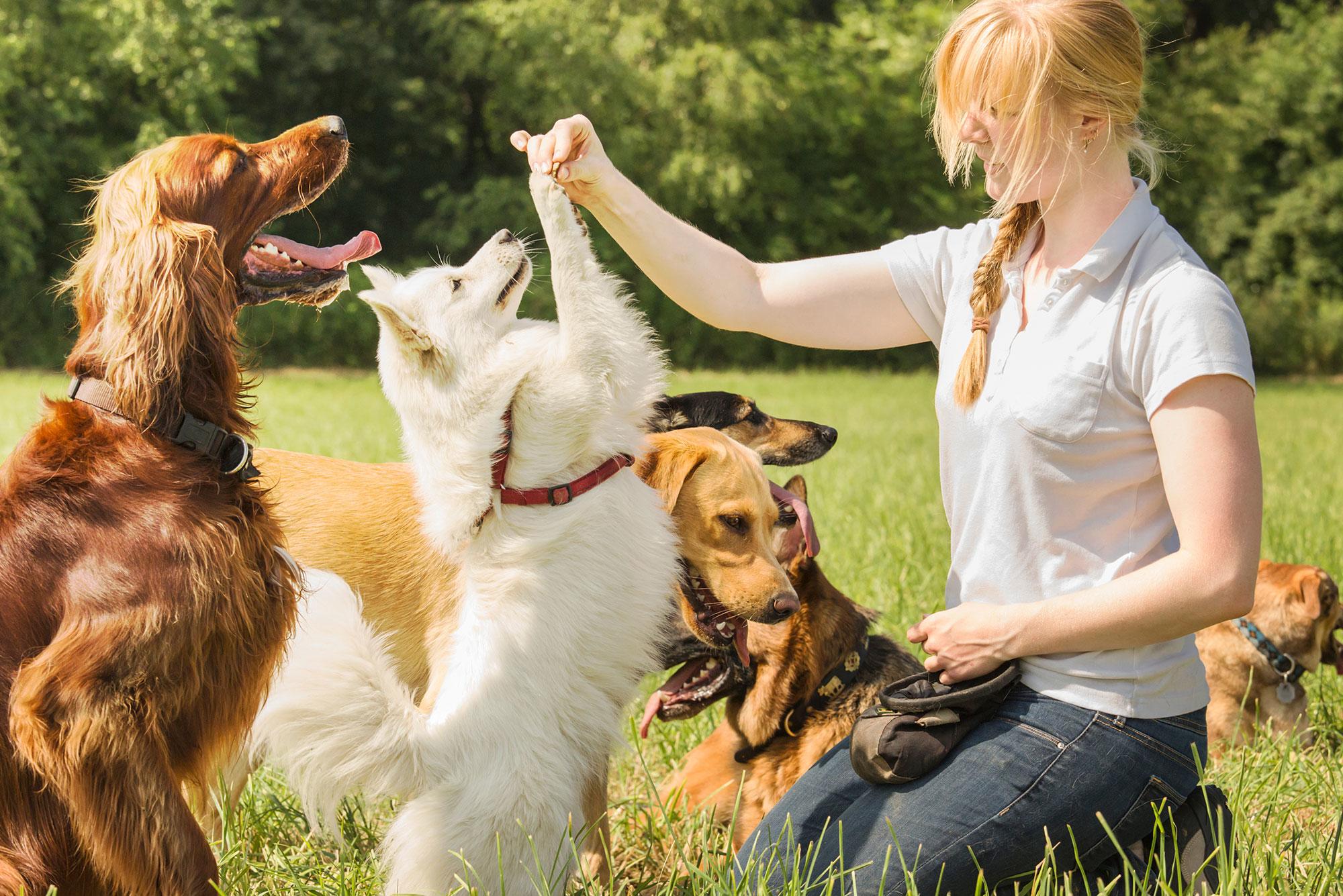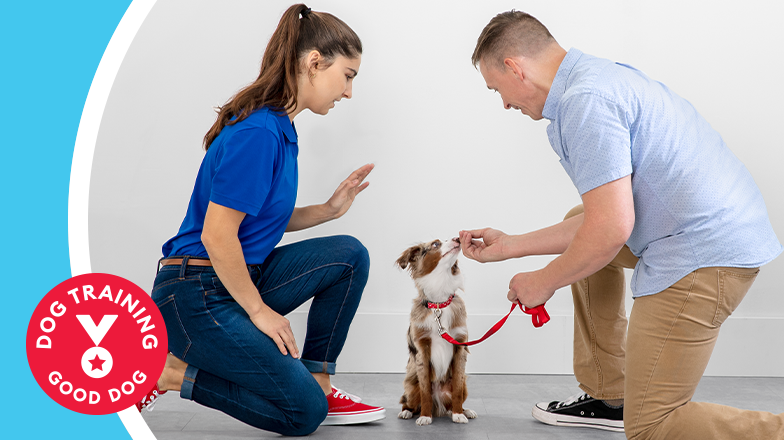Overcoming Challenges in Dog Training: Expert Advice for All Pet Owners
Overcoming Challenges in Dog Training: Expert Advice for All Pet Owners
Blog Article
Beginner's Guide to Successful Dog Training at Home
Effectively training a canine at home needs a nuanced understanding of canine habits and efficient communication strategies. Establishing clear training goals, making use of top notch benefits, and keeping consistency throughout household participants are critical components. Integrating training right into everyday regimens can improve both involvement and retention.
Recognizing Pet Actions
Understanding dog actions is important for reliable training and cultivating an unified partnership in between humans and their canine friends. Dogs communicate largely through body movement, articulations, and face expressions, making it important for proprietors to translate these signals properly. Identifying habits such as tail wagging, growling, or trembling can supply insights into a dog's emotional state and intents.

Usual behavioral issues, such as aggression, stress and anxiety, or too much barking, often originate from misunderstandings or unmet needs. Observing and addressing these problems immediately can avoid acceleration and guarantee a positive training experience. By fostering a deep understanding of dog actions, proprietors can tailor their training techniques to fit their canine friends, inevitably leading to a mannerly and contented family pet.
Important Educating Tools
A well-appointed training space can significantly improve the performance of pet training at home. Necessary training devices guarantee that both the canine and the trainer can involve in efficient sessions that cultivate knowing and bonding.

Spending in a tough chain and a comfortable, well-fitting collar or harness is vital for safety and security and control. These devices help develop boundaries and make certain the canine continues to be safe and secure during training. Furthermore, a marked training area, complimentary from diversions, aids concentration for both the fitness instructor and the dog.
Educating aids such as training pads, cones, or dexterity tools can also improve the experience by introducing variety and obstacles. Lastly, having a notebook or digital app for tracking progression can be very useful, allowing you to keep in mind successes and locations for renovation. Making use of these vital devices will create a positive training environment and lay the foundation for efficient knowing.
Developing a Training Regimen
Developing a regular training routine is crucial for effective dog training in the house. A well-structured regular not only helps in reinforcing wanted actions yet additionally offers your dog with a complacency and predictability. To create a reliable training routine, begin by identifying certain training goals, such as fundamental commands, chain walking, or house-breaking.
Pick a marked time every day for training sessions, preferably when your pet is responsive and sharp. Sessions should be brief, around 5 to 15 mins, to preserve emphasis and prevent fatigue. Uniformity in timing and environment will certainly boost your pet dog's discovering experience.
Integrate training right into day-to-day activities to strengthen abilities. Practice commands during strolls or nourishment, which incorporates learning right into all-natural regimens. In addition, continue to be adaptable and readjust the routine as essential, accommodating your pet's power levels and mood.
Favorable Support Strategies
Favorable support techniques are basic to efficient dog training, advertising wanted behaviors via incentives instead of penalty. This method uses positive stimulations, such as deals with, praise, or playtime, to encourage dogs to repeat specific activities. The cornerstone of this approach is timing; benefits should be given instantly adhering to the desired actions to develop a clear association.
When executing positive support, it is essential to pick incentives that are inspiring for your dog. High-value treats, such as tiny items of chicken or cheese, can be particularly efficient during training sessions. More Help Additionally, varying the rewards can keep your pet dog's passion and interest.
Beginning with basic commands, like "sit" or "remain," and progressively development to extra complicated jobs. Uniformity is key; make certain that all member of the family make use of the exact same commands and benefit systems to stay clear of confusion.
In addition, it is essential to stay client and stay clear of aggravation. Canines, like people, find out at their very own pace. By promoting a supportive training environment with positive reinforcement, you can enhance your pet dog's discovering experience while strengthening the bond in between you and your fuzzy companion, preparing for effective training results.
Typical Training Challenges
While training a dog in your home can be a rewarding experience, it usually comes with a collection of typical challenges that can test both perseverance and uniformity. One prevalent concern is distraction. Pet dogs may become easily sidetracked by sounds, motions, or perhaps scents in their atmosphere, making it hard to maintain their emphasis throughout training sessions.
One more difficulty is disparity in commands and reinforcement. It can prevent and perplex the canine progress if household members use different cues or incentives. Developing a unified method is vital for effective communication.
Additionally, canines can experience stress or anxiety, especially if they do not understand what is expected of them. This can result in unfavorable actions, such as eating or barking.
Lastly, the timing of reinforcement is crucial (Dog training). Postponed benefits can decrease the performance of favorable support, as pets might stop working to connect the behavior with the benefit
Getting rid of these obstacles calls for commitment, clear interaction, and an organized training plan. Acknowledging and dealing see here now with these usual barriers will certainly lead the way for a more satisfying and effective training experience at home.
Verdict
To conclude, successful dog training in the house demands a comprehensive understanding of canine behavior and reliable interaction techniques. By developing clear training objectives and using premium treats alongside positive reinforcement, useful source the training process becomes more gratifying for both the dog and the trainer. Uniformity, perseverance, and adaptability are necessary elements that assist in knowing. Inevitably, incorporating training right into daily routines improves the bond between pet dog and owner, making the experience both productive and delightful.
Developing a regular training routine is crucial for effective pet dog training at home.Positive reinforcement techniques are essential to efficient canine training, promoting desired actions with benefits instead than punishment (Dog training). By promoting a helpful training atmosphere through favorable support, you can enhance your dog's discovering experience while reinforcing the bond in between you and your furry friend, laying the foundation for effective training outcomes
In final thought, effective dog training at home requires an extensive understanding of canine actions and reliable interaction techniques. By establishing clear training goals and utilizing high-quality treats together with positive reinforcement, the training process ends up being much more satisfying for both the pet and the instructor.
Report this page